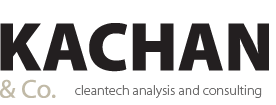
Your challenge
If you're a young company, you face many challenges in growing both your market and your organization. In the early stages, planning for success is the most important work you can do, since, ironically, success can be the most destabilizing thing to happen to your company. Are you properly planning for success? What should the executive team look like? How do you grow your “bench strength” in middle management? Should you grow organically, take capital or by acquisition? And how do you best apply gains to ensure your growth keeps you on your strategic path?
If you are an established or larger company, your organization has been doing things right, so you may ask why change them? But change is inevitable, both from within and without. Equity events such as mergers and public offerings offer excellent growth opportunities, but they also stress organizations accustomed to functioning in certain ways and can create massive uncertainty in both the management teams and rank and file by creating overlapping responsibilities and team redundancies, and expose gaps in processes and personnel.
Equity events can bring in badly needed resources, but they also bring in uncertainty and instability that must be planned for. Even when they work on paper by opening new markets and by adding staff and IP, mergers rarely return their investment — often because the effects of seemingly “soft” factors, like corporate culture, are not factored in. IPOs give early shareholders returns, but do little in the short or medium term to help improve business fundamentals, like helping sales teams close needed deals. And venture funding can be a shot in the arm, but often it comes with the price of a new management team.
How we help
Organizational alignment is more than just ensuring all the boxes on the org chart have names in them. Done properly, it is the foundation of stable corporate growth and effective change management. In any organization, there are two structures at play: the official lines of authority that confer responsibilities and rewards, and the “meta-organization” that actually gets things done, and an effective organizational alignment strategy must factor in both.
Our methodology recognizes that your business is, at its core, about people and the things they value. And that your organization is comprised of groups all working toward a common goal. However, a number of factors stand in the way of efficient functioning, including unclear communication, mismatches between responsibilities and lines of authority, personal goals working at cross-purposes and rewards structures that do not reflect contributions.
Ultimately, effective organizations are not as much about what is said as what is done consistently throughout the organization, from executives through to the receptionist. So our organizational alignment engagement services include action plans that allow you to achieve measurable outcomes.
Our process is based largely on primary research (though at times there are requirements for secondary research), analysis, and in-depth work sessions. All the projects we take on include the following:
- An initial in-depth work session with the client to develop a clear picture of the issues as seen from his or her perspective, review assumptions, discuss internal and external considerations and set measurable goals for the project
- Interviews with stakeholders on company strategy, operations and concerns—all done anonymously to facilitate openness and candor, thereby getting a fuller picture of both the organization and the “meta-organization”
- Work session on initial findings and recommended next steps, such as reassessment of strategy, reorganization, or adjustment to processes
- A final presentation, including recommended action plan and next steps
An initial work session, at least one interim work session, and the presentation of final results and their implications are critical meetings in an organizational alignment engagement. One of the main requirements, however, is frequent (usually weekly) check-ins with the client to ensure that the project is on track and that issues surface before they become critical. Of equal import is access to personnel and other stakeholders for in-depth, anonymous, and open conversations so we are able to provide objective counsel.
The final project deliverable for an organizational alignment engagement depends on the nature of the starting point, e.g., equity event, reorganization, executive team change, but at a minimum it includes a high-level findings document and an action plan with schedule.
In the case of a merger, we recommend that we become active participants on the integration team for the new organization. That way we can help develop the joint strategy, organizational imperatives, and communications strategies key to successfully integrating the independent business entities.
Timeframe & Fees
Our organizational alignment engagements normally last from one to two months. We can estimate a more exact timeframe and fees after learning more about your specific business issues and state of your current strategy. Contact us to discuss your company and how we can help.
